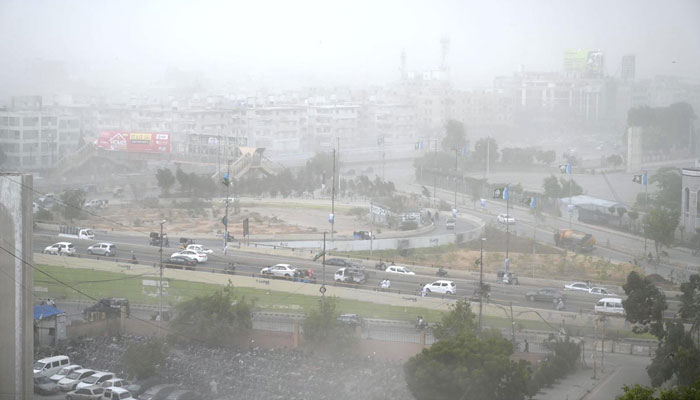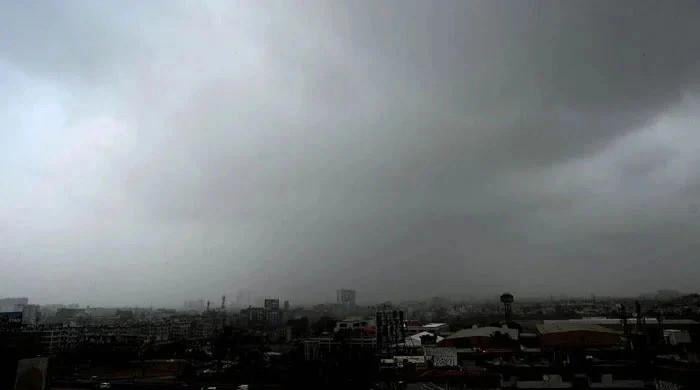Karachi to sizzle at 40°C despite chances of light rain in some areas
"Windstorm in city was caused by production of convective energy due to earth's heat," says weather expert
October 11, 2024

Sardar Sarfaraz, the chief meteorologist at the Pakistan Meteorological Department (PMD), said on Friday that some parts of Karachi are likely receive light rain and wind, but it will not bring down the city's soaring temperature.
Mercury in the port city may reach up to 40°C and won't be impacted by the possibility of rain.
The residents of Karachi, a day earlier, got some respite from the sweltering heat after brief showers accompanied by strong winds and hailstorm hit some parts of the port city, turning the weather pleasant.
The city was reeling under sweltering heat when dark clouds spread over different areas of the city and it started raining with some areas witnessing hailstorm.
Areas across Karachi witnessed unexpected showers, drenching its central parts including Malir, North Karachi, Bufferzone, Gulshan-e-Hadid, Gulistan-e-Johar and Shah Faisal Colony.
"Even today, the temperature in Karachi can reach 40°C," said the weather expert during Geo News programme 'Geo Pakistan', adding that the temperature will likely decrease in the city.
The PMD official said that rainfall was expected in the city's suburbs with temperatures rising up to 39°C and 40°C. However, Karachi's eastern and north eastern parts witnessed rain instead with some isolated, concentrated cells gathering in the same place.
The weather expert said that the windstorm in the city was caused by the production of convective energy due to the earth's heat.
Sarfaraz revealed that night time temperatures in the northern regions has reached single digits.
Separately, Sarfaraz told Geo News that low air pressure has formed in the south-east of the Arabian Sea, which may intensify and turn into depression during the next one to two days.
"A depression can become a hurricane if the atmosphere is favourable," said the weather forecaster.
He maintained that most of the post-monsoon cyclones are directed towards Oman and there is currently no threat to Pakistan's coastline from this system.









